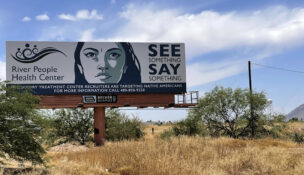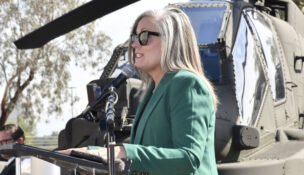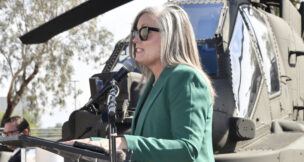Fire districts face funding crisis, lawmakers seek solutions
Jakob Thorington Arizona Capitol Times//August 1, 2025//
Fire districts face funding crisis, lawmakers seek solutions
Jakob Thorington Arizona Capitol Times//August 1, 2025//
Key Points:
-
Fire districts face critical failure without alternative funding source
-
Firefighters are leaving districts for municipal level jobs
-
Lawmakers propose using private ambulance companies for rural EMS services
Firefighters told lawmakers this week that fire districts are on the brink of collapse without an alternative funding source.
Now, lawmakers are trying to gauge the state’s preparedness for wildfire events with a Fire Preparedness Committee House ad hoc committee.
Arizona utilizes more than 130 fire districts across the state to provide fire protection to residents within each taxing district. But their primary funding source, property taxes, has shifted to the point where officials no longer believe they can sustainably provide the critical emergency response services to rural areas.
On July 29, Dan Frieberg, president of the Professional Fire Fighters of Arizona, told the committee that firefighters are also leaving underfunded fire districts for municipal level jobs.
“They can read the writing on the wall. It is unsustainable,” Frieberg said.
Voters passed Proposition 117 in 2012, which sets a cap on annual property tax increases to 5%. Frieberg said that since that change fire districts have not been able to keep up with inflation, and are about 10 years behind in funding.
The current price of a modern fire engine now exceeds $1 million.
The Legislature attempted to address the issue with Proposition 310 in 2022, which narrowly failed after 51% of voters opposed the measure. Prop. 310 would have created a tenth of a cent state sales tax for fire districts, allowing people in urban areas that have city fire services to subsidize fire districts.
Since the failure of Prop. 310, Frieberg told the Arizona Capitol Times that he’s had little success advocating for funding, and he fears firefighters are being pushed too thin.
“People die from this. That’s just the objective reality,” Frieberg said.
The state budget allocated funds to fire protection. All firefighters employed by the Department of Forestry and Fire Management received a 15% pay raise. The budget also allocates $30 million to the wildland fire suppression fund to try to proactively prevent forest fires. An additional $11 million was secured to help cover costs for communities affected by wildfires, and $2 million will be allocated for fire incident management grants.
Some lawmakers, like Rep. Walt Blackman, R-Snowflake, introduced bills to deal with the lack of funding, but those bills weren’t included in the budget.
“The problem is that we have other members that don’t see what we see,” Blackman said.
Gary Morris, the former fire chief of Pine-Strawberry Fire District and a member of the ad hoc committee, said most of the burden for fire districts comes from the medical services many districts provide. He said it’s time for state lawmakers to reconsider how fire districts are funded.
The state might also eliminate the need for fire districts to provide emergency medical services, freeing up staffing and resources for firefighting. Arizona Tax Research Association President Kevin McCarthy said that EMS is often conflated with fire protection, and large wildfire events typically need more than just one fire district responding to it.
“It seems to me that the response to that can’t be one small fire district at a time,” McCarthy said.
Private ambulance companies can offer EMS services in rural areas, but they also usually bill more than municipalities.
In a 2023 meeting about San Tan Valley’s fire coverage, Rep. Neal Carter, R-San Tan Valley, shared a story from one of his constituents who drove to the closest fire district in Queen Creek while she was having a heart attack. She didn’t subscribe to Rural Metro, a private fire and EMS company in the area, and didn’t want to pay the higher bill.
Some fear the damage caused by a catastrophic fire in an underfunded district could compare to the January wildfires in Southern California.
During the July 29 House ad hoc meeting, Timber Mesa Fire Chief Randy Chevalier said the greatest threat to communities like Payson, Show Low and other rural areas of the state is a structure fire that can’t be contained.
Timber Mesa has more than 200 square miles of wildland its firefighters protect and more than 400 square miles of coverage for medical services. Chevalier said response times can climb upward of 30 minutes for his firefighters.
Blackman is also calling on the state to rely less on out-of-state fire protection, which he said can cost the state up to 40% more in additional costs to respond to wildfire events. In a news release before the ad hoc meeting, Blackman said he wanted to see the state turn to in-state contractors rather than rely on aid from neighboring states, where one fire engine can cost an additional $1,400.
“We should be using every trained and equipped engine in the state — but instead, we’re bypassing local crews and importing more expensive resources from out of state,” Blackman said.














































